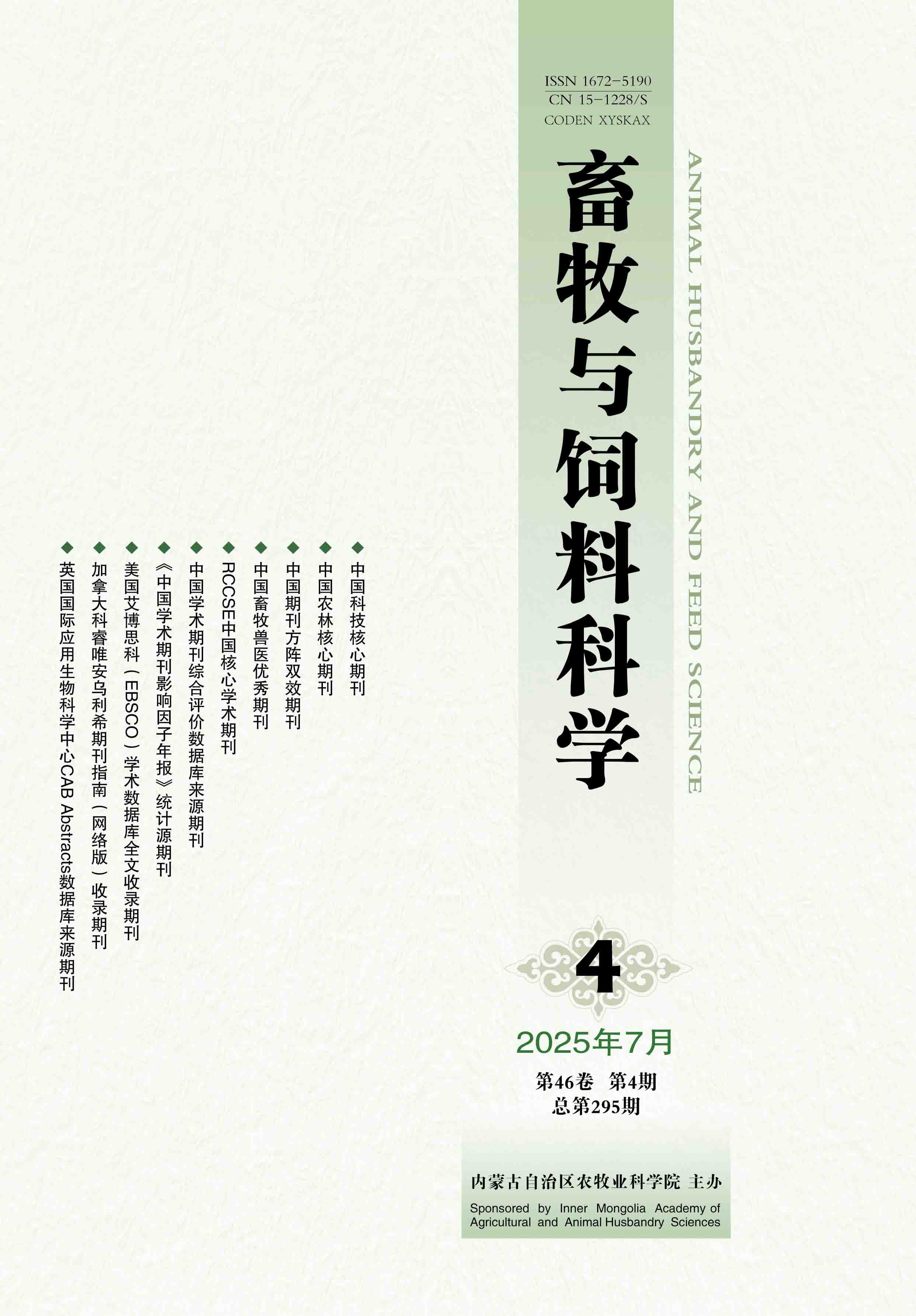Select
Investigation of Correlations between Serum Hormone Levels and Lactation Performance in Alagxa Bactrian Camels Based on Canonical Correlation Analysis
Daolema, GUO Lili, DU Haibo, ZHANG Wenguang, ZENG Yaying
2023, 44(6):
88-93.
doi:10.12160/j.issn.1672-5190.2023.06.011
Abstract
(
1365 )
PDF (760KB)
(
127
)
Save
References |
Related Articles |
Metrics
[Objective] The present study was conducted to assess the correlations between serum hormone levels and lactation performance in Alagxa Bactrian camels. [Method] A total of 65 Alagxa Bactrian camels with similar body conditions and parities in the early lactation stage were selected, and their serum hormone levels (estradiol, estriol, estrone, follicle-stimulating hormone, luteinizing hormone, progesterone, prolactin, growth hormone, cortisol, 5-hydroxytryptamine, epinephrine, norepinephrine, insulin, glucagon, leptin) as well as the lactation performance indicators (milk yield, milk protein rate, milk fat rate, lactose rate, ash content) were determined. Canonical correlation analysis between serum hormone levels and lactation performance was carried out: using lactation performance indicators as the X group variables, with V being the corresponding comprehensive variable; using serum hormone levels as the Y group variables, with W being the corresponding comprehensive variable; the overall correlation between the two groups of indicators were reflected by the correlation between the two comprehensive variables, and the correlations between serum hormone levels and various indicators of lactation performance were explored. [Result] In the X group of lactation performance indicators, the variation degree in the milk yield was the highest, followed by milk fat rate, while the coefficients of variation in lactose rate, ash content and milk protein rate were relatively small. In the Y group of serum hormone level indicators, progesterone had the highest coefficient of variation, followed by estradiol, luteinizing hormone, norepinephrine, follicle-stimulating hormone, 5-hydroxytryptamine, cortisol, estrone, prolactin, epinephrine, insulin, estriol, growth hormone, leptin and glucagon. The correlation analysis among the internal variables of serum hormone levels showed that serum levels of estriol were significantly positively correlated with those of estrone (r =0.88, P <0.001), luteinizing hormone (r =0.70, P <0.001) and prolactin (r =0.59, P <0.001). The canonical correlation analysis between lactation performance and serum hormone levels indicated strong correlation between milk protein rate and serum level of estriol. [Conclusion] The milk protein rate in the early lactation stage of Alagxa Bactrian camels is correlated with serum hormone levels of estriol, estrone, luteinizing hormone and prolactin.








